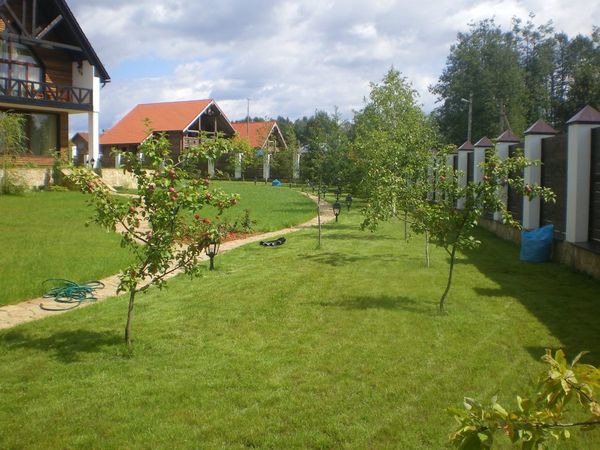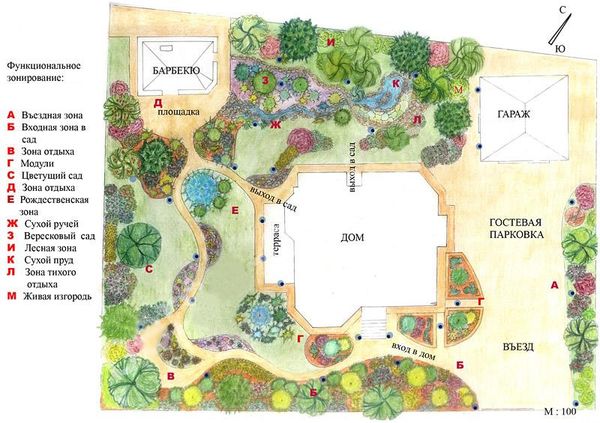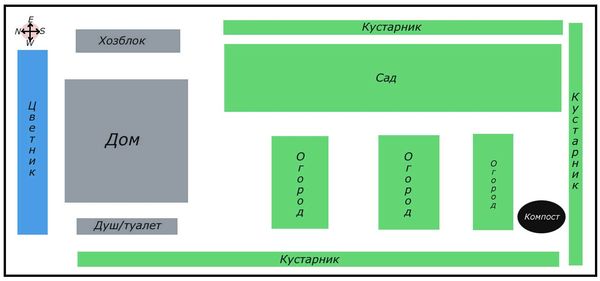Where to start your own and how to properly plant the first orchard
Content
What cultures are suitable for beginners
The first thing a novice gardener needs to determine is what trees and shrubs to plant in the garden. You need to know that here you need not only to decide on the type of plants, but also to find out if the neighborhood is permissible between them. The fact is that some varieties, both fruit trees and berry bushes, cannot grow in close proximity to each other. This is due to the fact that plants will compete for access to nutrients in the soil. As a result, the stronger species will survive, and the weak will slowly dry out and soon die.
Another important point when choosing what to grow in the garden is the complexity of caring for a particular crop. To date, breeders have bred a wide variety of varieties of trees and shrubs. However, only some of them are considered undemanding to growing conditions and care.
A novice gardener, in order to provide himself with a bountiful and tasty harvest in the future, should choose plants for planting according to the following criteria:
- climatic conditions in which the variety should be grown. The choice depends on the weather conditions typical for the given growing region;
- yield. This parameter must be at least average;
- care requirements. Naturally, a novice gardener should stop his choice on those crops, the care of which is minimal and does not include complex agrotechnical procedures;
- frost and cold resistance. The higher these indicators, the less hassle there will be with the plants when preparing them for winter;
- ripening period of fruits. It is better to give preference to early and mid-early species that bear fruit long before the fall frost appears. This will allow the beginner to harvest the crop without loss.
When choosing, it is also necessary to evaluate the characteristics of the soil so that the planted seedlings do not lack nutrients. It is worth noting that in order to obtain a harvest throughout the season, it is necessary to plant several varieties of the same species (for example, apple or pear). And take varieties with different ripening periods.
Most often, beginners grow apple, pear, plum and cherry trees. From shrubs it is worth choosing gooseberries, any varieties of currants, raspberries and blackberries.
As for vegetable crops, a beginner should grow cucumbers, tomatoes, peas, herbs (dill, parsley, celery, lettuce), carrots, beans, onions and garlic.
Video "Zanning a suburban area"
In this video, the expert will talk about the zoning of the suburban area.
Site selection and preparation
To plant trees, shrubs and vegetable crops on your site, you must first prepare a "planting place" for them. To begin with, the land should be cleared of wild bushes, plant debris and stumps, as well as stones and other debris. After that, the soil is plowed and dug up.
The area is then watered to induce weeds. Then they are destroyed and the ground is leveled. At the same time, fertilizers are applied to the soil in order to improve its performance.The soil can be taken for analysis in order to accurately determine its condition. This will allow you to find out what fertilizer you need to apply.
After the actions taken, it is necessary to plan the available space, and determine where and what will grow. When the planting plan is ready, you can start planting seedlings.
We draw up a placement plan
In order to properly organize your garden, you need to zoning it and determine the place of growing fruit trees, berry and vegetable crops.
Zoning basics
You need to zone the garden first on paper, where a plot of land is schematically drawn. You can plant plants on any side of the house and other buildings. However, shrubs and trees are recommended to be placed from north to south. In this case, the landings will receive excellent illumination.
It is optimal when the garden consists of three zones: trees, vegetables and shrubs. They can be placed both sequentially and on different parts of the site. When jointly planned, the zones look like this:
- the first is a vegetable garden;
- the second is a berry;
- the third is fruit trees. Plants must be planted at a distance of 2.5–3 m from the fence.
It is worth noting that light-loving crops (peach, pear, apple, plum, cherry) should be planted from the southwest or south.
Orchard breakdown
The layout of the garden by fruit trees is also drawn on a piece of paper. For each culture, it is necessary to allocate about 4 square meters. m under one tree. You can not thicken the planting. The distance between the plants should be 4–4.5 m, and between the rows - 2.5–3 m. But if columnar varieties are grown, then the distance can be reduced.
To obtain a yield in volume for one average family, you need to plant about 1-2 trees of each variety. In this case, early, medium and late varieties should be planted in order to obtain a harvest for most of the season. It is necessary to give preference to zoned species.
Berry planning
When forming a berry, one should take into account the characteristics of the crops grown. It is important to identify the neighbors here. For example, black currants and gooseberries, as well as sea buckthorn with viburnum, should not grow in close proximity to each other. These species must be grown separately.
Some gardeners prefer to plant berry bushes along the border of their plot. This format allows you to free up the inner space of the garden for other areas (for example, recreation) or vegetable crops. However, this placement option is possible only if there is no green fence on the site.
It is important to correctly determine the planting density. This parameter is selected for each variety and depends on the strength of plant growth. For example, raspberries are planted in dense rows with a distance of 1–1.5 m. There is 0.5 m of free space between the bushes.
Gardener Tips
Experienced gardeners are advised to adhere to the following rules when planning a garden:
- for the correct zoning of the land, it is necessary to use the plan of the acquired land. It can be obtained from the bureau of technical inventory;
- when planning, it is imperative to take into account the placement of communications in the ground;
- the relief of the garden plot must also be taken into account. Some crops prefer to grow in high ground, while others in lowlands;
- for planning an orchard, it is imperative to know the depth of groundwater;
- taking into account the direction of the wind on the site will allow you to correctly place the species that are pollinated by air masses. This can increase the yield of individual trees;
- in order for the planted plants to develop normally and bear fruit well, the chemical index of the soil, as well as its pH, must be taken into account.
Knowing how to plant a garden on a plot of any size and characteristics, you can grow a wide variety of crops without any problems, collecting a bountiful and, most importantly, delicious harvest from trees and shrubs.




